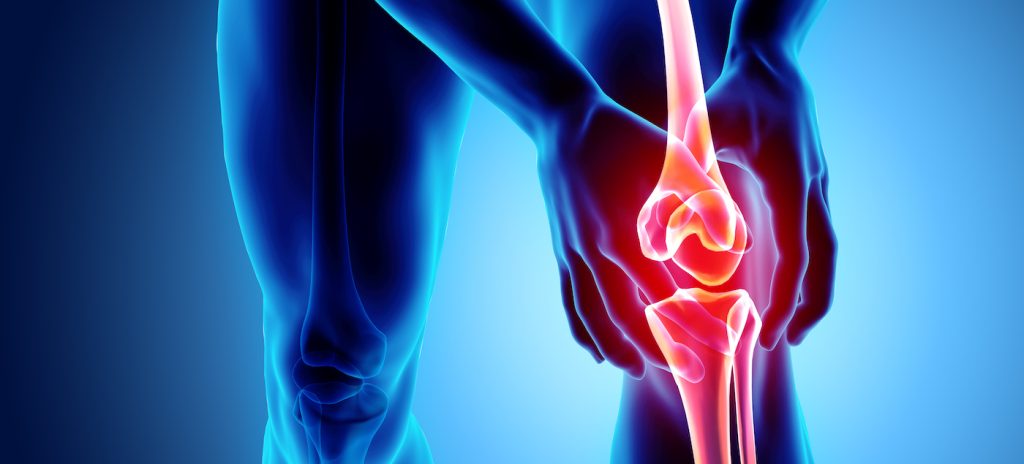
How to Differentiate Between Joint Pain and Arthritis?
Joint pain and arthritis are two commonly mistaken conditions because they belong to the same pathologic family, especially rheumatism. They are, nonetheless, unique, and many of their symptoms are distinct.
Joint pain is a physical issue as cartilage in the joints wears down over time. The most prevalent risk factor for this is aging.
Arthritis, on the other hand, is not triggered by natural bone wear and strain. Instead, it’s an inflammation that causes chemicals to be secreted, slowly damaging the joint’s structure. It might be caused by an infectious, genetic, or metabolic condition.
Defining Each
The phrases arthritis and joint pain are used interchangeably by specific health organizations.
Joint pain, for example, is defined by the Crohn’s & Colitis Foundation of America (CCFA) as “aching or discomfort in the joints (without swelling).”
Arthritis is defined as “joint inflammation (pain and swelling).”
Similarly, arthritis is defined as an “inflammation of a joint” that produces “pain, stiffness, and swelling in joints, muscles, tendons, ligaments, or bones,” according to Johns Hopkins Medicine.
Many Faces of Arthritis
We can search out more than 100 different types of arthritis, which undoubtedly lead to confusion. We’ve categorized the illnesses that classify as arthritis into four groups to make things easier:
1- Degenerative Arthritis
When the soft tissues inside your joints start breaking down, this type of arthritis develops. Osteoarthritis is the most prevalent kind of degenerative arthritis, which occurs when the cartilage in your joints wears away.
2- Inflammatory Arthritis
Such kind of arthritis emerges when your immune system malfunctions, causing inflammation in your joints. Rheumatoid and psoriatic arthritis are the most frequent types of arthritis.
3- Infectious Arthritis
These varieties of arthritis are defined as an infection in your body to produce inflammation and discomfort in your joints, as the term indicates.
4- Metabolic Arthritis
As with gout, the most prevalent form of metabolic arthritis, this kind of arthritis is caused by a problem with your metabolic system.
Top Causes of Joint Pain after Arthritis
What is then the root cause if it’s not arthritis? The following are the top three most likely causes of joint pain:
1- Bursitis
Bursitis is common around joints with many repetitive actions, such as the shoulder, elbow, hip, knee, heel, or the base of your big toe.
2- Tendinitis
Tendinitis is when a tendon becomes inflamed or irritated where it joins to a joint. It can affect any tendons, yet it usually affects the shoulders, elbows, wrists, knees, and heels.
3- Fibromyalgia
Fibromyalgia is a debilitating chronic condition that expresses itself in various ways, including joint pain. Only when symptoms appear on both sides of the body are fibro identified, it is more common in women than men.
Treatments
Both joint pain and arthritis have different treatments depending on the underlying reason.
A doctor may suggest surgery to repair or reconstruct the joint and enable the individual to restore their range of motion if the symptoms are severe and include a loss of mobility.
If another underlying problem causes the symptoms, the doctor may prescribe several drugs to treat it or change its course.
Even if joint pain or arthritis symptoms aren’t severe, the doctor will check out any underlying disorders before offering easy treatments and home cures.
Home Remedies
Doctors frequently recommend many home treatments to treat joint pain and arthritic symptoms. Like:
- Physical therapy and exercise may be the most effective treatments for these conditions’ joint pain.
- Regular physical activity can help manage arthritis pain as effectively as over-the-counter medications.
- Regularly getting low-impact exercise, such as swimming, cycling, or practicing yoga, may help reduce pain and keep the muscles around the joints strong.
Other at-home methods of managing symptoms include:
- alternately using warm and cold compresses to relieve pain and stiffness
- using an over-the-counter nonsteroidal anti-inflammatory drug, such as ibuprofen (Advil) or naproxen (Aleve), to relieve pain
- practicing relaxation techniques, such as meditation, tai chi, and massage therapy
- resting to avoid overworking the muscles and tissues in the joint
Conclusion
More than 92 million persons in the United States suffer from joint pain caused by arthritis, with symptoms ranging from moderate to severe. While arthritis is by far the most common cause of joint discomfort, it is far from the only one. The cause determines the most appropriate and successful treatment for your joint pain. So speak with the best Orthopedic doctor in Islamabad to determine the best course of action.
Frequently Asked Questions (FAQs)
1- What causes arthritis?
Arthritis is a chronic joint condition. Arthritis comes in various forms, all of which can cause discomfort and limit movement. Natural wear and tear can cause some types of arthritis, and Autoimmune or inflammatory illnesses cause other kinds.
2- Can children get arthritis?
Yes, arthritis may affect youngsters. Adolescent idiopathic arthritis (JIA), commonly known as childhood arthritis or juvenile rheumatoid arthritis, is the most frequent arthritis in children.
3- Can joint pain not be arthritis?
Acute joint pain takes place and is typically not caused by an underlying condition or joint injury. Bursitis is probable for acute joint pain and arthritis, and strains and sprains are common injuries.


























